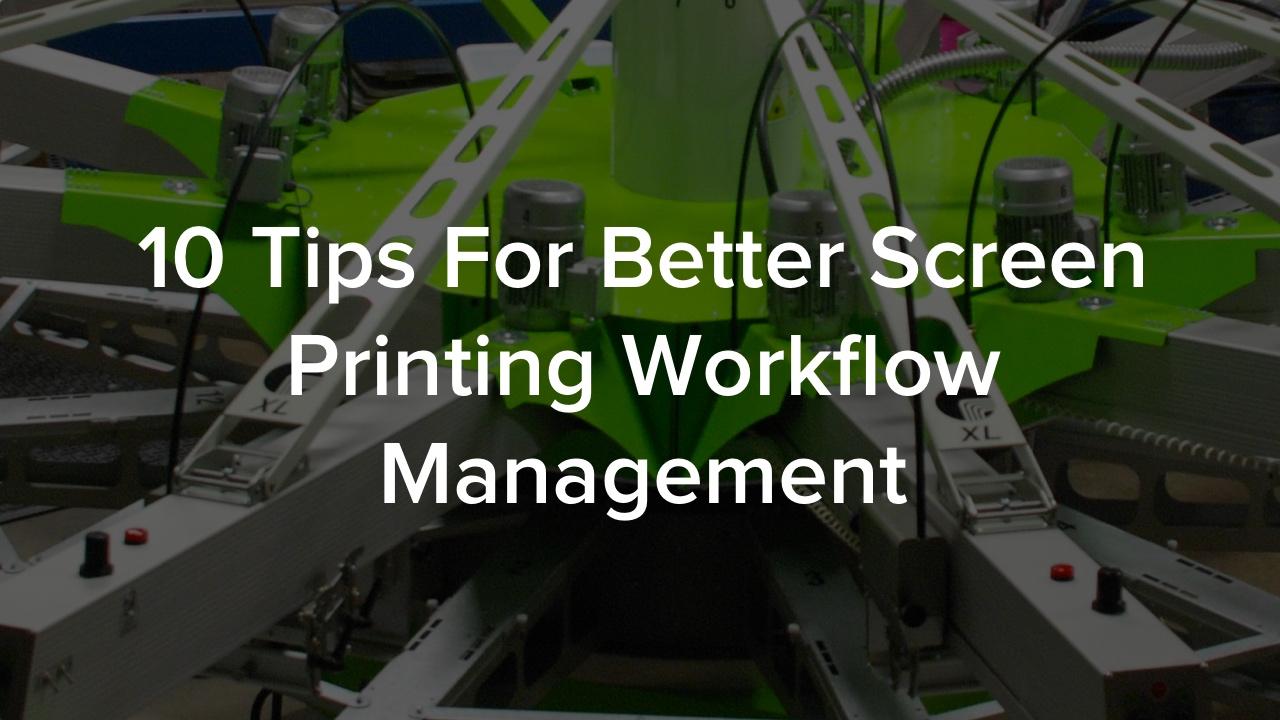When taking a holistic look at the printing industry, one might think that this business is fairly simple. Yet, since products are custom made to exactly the customer’s specifications, complications do arise. Bottlenecks occur. Misprints happen. To your family members and peers, you are simply t-shirt printer, what could possibly go wrong?
Deep down you cringe thinking of the 200 different complications that may arise when producing an order. You have been in situations when disaster strikes, and often times you might find yourself reacting to problems, by implementing new rules into your shop as things come up. Instead of creating solutions to problems that have caused you precious time and money, let’s take a look at 10 easy ways to manage your workflow.
1. Write out your workflow – Seems simple enough, right? If you asked each of your staff members to write out your shop’s workflow, you will find that everyone will do it a little differently. It is imperative that your workflow is on paper.
2. Create Departments – Your shop should be broken down into different departments using statuses directly related to their role. There could be a sales, art, pre-press, production, and shipping department. Make it personal for your business.
3. Get your team communicating – Each day your team should huddle and go through their workflow and how they will manage jobs. The same way nurses communicate with doctors before surgery, make sure you have open communication channels.
4. Cut down the multi-tasking – When your staff has too many things to do, mistakes happen, and efficiency goes down. Create simple focused tasks that are oriented to each department.
5. Embed tasks under each department – Each department should have clear and defined tasks. Make it dummy proof and have your team check them off for each job.
6. Keep a digital trail of your entire order – Paper gets lost. We live in the cloud! Get your shop there and make sure you have a digital record of all communication with the customer.
7. Track time – Take a few orders every week and see how quickly they went through different departments. Figure out where bottlenecks are and evaluate them.
8. Reward your team – Create an incentive for jobs that are handled properly and on time. Similar to how a shop handles safety in manufacturing, create a chalkboard that reads “it has been (
9. Figure out costs – Break down costs associated with each department so you can find your cost per impression. By figuring out these costs, you can allocate or move around labor to speed up different processes.
10. Be experimental – Your workflow will never be perfect. Be flexible, nimble, and willing to change it based on how well your workflow is operating in your shop. If things do not go right, spend time changing, adapting, and testing the new workflow. You might find those strange nuances in your shop that work better for your business. Try things out!


0 Comments